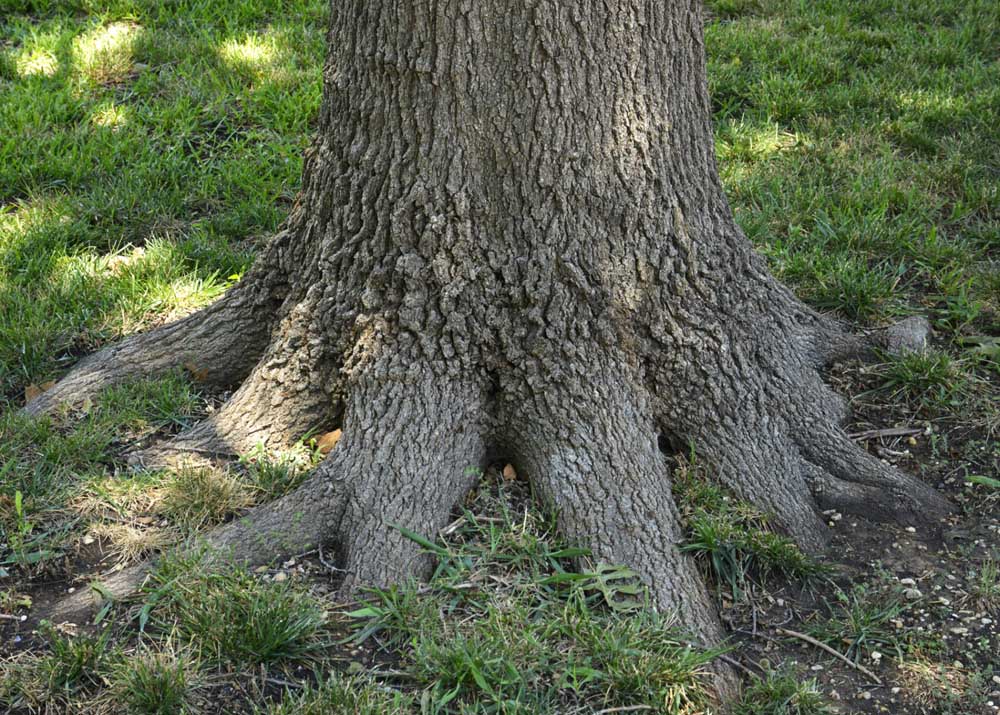Sperry: How to deal with crape myrtle bark scale
Published 3:00 pm Sunday, February 16, 2025

- It’s normal for a healthy tree to have large surface roots. Do not try to cover them with topsoil. (Contributed Photo)
Dear Neil: Is there an effective treatment for crape myrtle bark scale? It’s not as bad as it was a few years ago, but I’d like to eliminate it.
As insects in Texas go, this is a comparative newcomer, first appearing in 2004. Entomologists across the South have been conducting research on it for the past several years. It still appears that the systemic insecticide Imidacloprid applied as a soil drench specifically around the affected plants just one time, about the middle of May, is your best means of lessening the population. In my 20 years of watching this pest, I’ve decided that it’s not especially harmful. It just creates a mess on the leaves and stems in years when it’s bad. I’ve watched the twice-stabbed ladybug populations rise in years when there are large populations of the scales. (There have only been a couple of those bad years.) They usually bring the scales under control within just a few weeks. Note: the immature form of the ladybugs (“nymphs”) are odd-looking insects that don’t resemble the adults at all. Do not apply any insecticide if you see them.
Dear Neil: Have you ever used pecan hulls as a mulch? I have access to some and wondered if they would be good in my flower and vegetable garden.
Pecan hulls make a lovely mulch in a perennial garden or shrub bed. They lay flat and, at least in my experiences, they lasted a couple of years. I enjoyed watching the birds peck away at the remains of the pecans that came with them. I will say that some of them got rototilled into my garden soil in a couple of areas and they did tie up nitrogen pretty badly as they were breaking down. That’s to be expected with fresh organic matter. From that standpoint, I’d use them only on top of the soil, not incorporated into it. If I intended to blend them into the soil, I think I’d probably run them through my compost pile for a year first.
Dear Neil: Several areas of my lawn are on rather steep slopes. Over the past few years, the roots of several trees have appeared on the surface. I now have to mow around them. I don’t know if it’s from erosion. What should I do?
Trees have 90 percent of their roots in the top foot of soil. You’ll see that the next time you see some poor tree that has been pushed over by a bulldozer. As the tree grows larger, so do its limbs and so do the roots. Initially they may have been only 3 or 4 inches below the surface, but they gradually grow up and out of the soil. Erosion is very seldom a factor. My suggestion is always that we learn to live with them. Odds are that excessive shade will eventually cause the grass to thin out anyway. That’s when a shade-tolerant groundcover can conceal the roots and make mowing unneeded.
Dear Neil: After years of struggling to keep St. Augustine looking attractive, I had my landscape changed into a xeriscape. However, weeds have been a horrible issue. They are growing on top of the weed-blocking fabric the landscaper put in place beneath the crushed granite and rocks. They seem to grow in even a minute amount of soil. Decorative landscape boulders have turned black and green, and I can’t clean them. What other options might there be?
It’s difficult to advise without seeing it all, but I’ll offer some general comments. Consider raking the smaller rocks into a pile temporarily. Salvage whatever of the granite you can. Cut the weed-blocking fabric and remove it. While the area is bare, try a spray bleach onto the boulders to kill the moss and mold. Give it a couple of hours, then scrub the stones with a brush and soapy water. At that point I would decide where I could use turf most effectively to break up the starkness of all the rock. Use smaller areas of grass, but don’t do without it entirely. Consider zoysia sod in place of the St. Augustine and choose low-maintenance shrubs and groundcovers for the new plantings. Small river rocks can make a nice groundcover substitute if you don’t overdo them.
Dear Neil: Do you recommend lawn aeration? I’ve had trouble finding someone who would do it for a residence.
I recommend aerification for three specific and rather uncommon situations. If you have had an unusually heavy amount of traffic across an area (people walking at an event or children playing ball), if a vehicle has been parked repeatedly on the grass, such as alongside a driveway, or if a layer of thatch has accumulated over the years. Note that thatch is undecomposed organic matter that forms beneath the grass runners and on top of the soil. It is not to be confused with browned stubble left over from winter’s freezing weather. All you have to do to eliminate the stubble is scalp the lawn. I have personally never felt the need to aerify my own lawn, and I seldom recommend it to others unless they have one of those three situations. Rental companies often do rent the equipment you would need to do your own lawn if you so choose.







